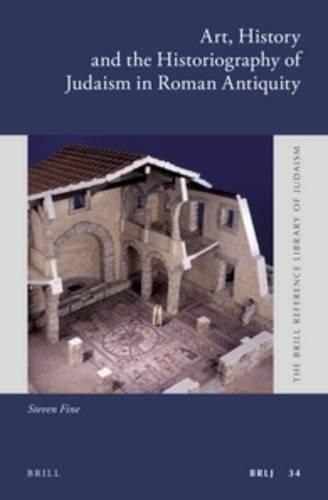Readings Newsletter
Become a Readings Member to make your shopping experience even easier.
Sign in or sign up for free!
You’re not far away from qualifying for FREE standard shipping within Australia
You’ve qualified for FREE standard shipping within Australia
The cart is loading…






Art, History, and the Historiography of Judaism in Roman Antiquity explores the complex interplay between visual culture, texts, and their interpretations, arguing for an open-ended and self-aware approach to understanding Jewish culture from the first century CE through the rise of Islam. The essays assembled here range from the thick description of Josephus’s portrayal of Bezalel son of Uri as a Roman architect through the inscriptions of the Dura Europos synagogue, Jewish reflections on Caligula in color, the polychromy of the Jerusalem temple, new-old approaches to the zodiac, and to the Christian destruction of ancient synagogues. Taken together, these essays suggest a humane approach to the history of the Jews in an age of deep and long-lasting transitions-both in antiquity, and in our own time.
Taken as a whole, Fine’s book exhibits the value of bridging disciplines. The historiographical segments integrated throughout this volume offer essential insights that will inform any student of Roman and late antiquity. Yael Wilfand, Hebrew University, Review of Biblical Literature, 2014.
$9.00 standard shipping within Australia
FREE standard shipping within Australia for orders over $100.00
Express & International shipping calculated at checkout
Art, History, and the Historiography of Judaism in Roman Antiquity explores the complex interplay between visual culture, texts, and their interpretations, arguing for an open-ended and self-aware approach to understanding Jewish culture from the first century CE through the rise of Islam. The essays assembled here range from the thick description of Josephus’s portrayal of Bezalel son of Uri as a Roman architect through the inscriptions of the Dura Europos synagogue, Jewish reflections on Caligula in color, the polychromy of the Jerusalem temple, new-old approaches to the zodiac, and to the Christian destruction of ancient synagogues. Taken together, these essays suggest a humane approach to the history of the Jews in an age of deep and long-lasting transitions-both in antiquity, and in our own time.
Taken as a whole, Fine’s book exhibits the value of bridging disciplines. The historiographical segments integrated throughout this volume offer essential insights that will inform any student of Roman and late antiquity. Yael Wilfand, Hebrew University, Review of Biblical Literature, 2014.